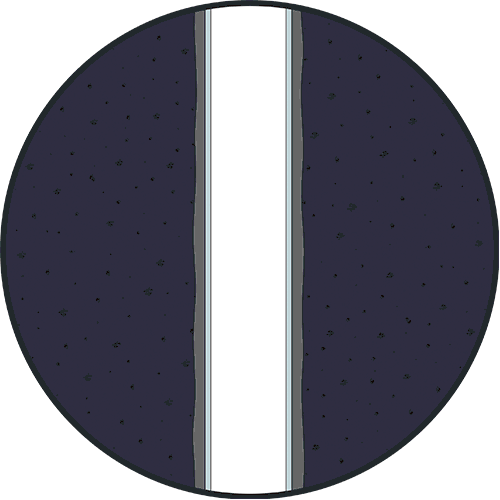
Hydro-sandblasting
The essence of the technology is to create channels in one or more casing strings, cement stone and rock by injecting a liquid with an abrasive material through a hydrosandblast perforator.

Purpose
- For the initial opening of cemented formations.
- Reservoir fluid stimulation - re-/additional perforation of reservoirs.
- Isolate the flooded formation by creating perforations in it for further cementing.
- After repair and insulation work to maintain the strength of the insulating material.
- When there are two or more casing strings in the target.
- With a small thickness of productive layers.
- When productive formations are close to aquifers or there is oil-water contact in the formation.
Stages of work
1. Selection of wells for work based on the analysis of geological and field materials.
2. Technology design for each individual well. Determination of technical and technological parameters during the work.
3. Carrying out work on the well with constant monitoring of technological parameters, and their adjustment depending on the course of the process without stopping injection.
Equipment used
- Underground equipment: tubing; rapper;
- Ground equipment: BOP; high pressure valve; lifting installation; capacity for process fluid of the required volume;
- Special equipment: pumping units for operation at pressures up to 400 atm with a capacity of up to 1.4 m3 / min; sand mixer; sand carrier; manifold block; auxiliary pumping unit for pumping process liquids;
- Special equipment: hydrosand-jet perforator type MGPP - a multi-stage perforator of the original design that allows for a given amount of work to be done in one trip without going to the surface to replace nozzles and other wear parts and assemblies cutting.
Materials
- Technological fluid - aqueous solutions of surfactants, polymer solutions, etc.
- Abrasive material - quartz sand or other abrasive material.
Features of work execution
- Full control of the technological parameters of the HPP process and its timely correction.
- Clean and significantly larger canal surface than canal surface after using other perforation methods due to the pear shape of the canal.
- Improvement of hydrodynamic perfection of the well compared to other perforation methods.
- The length of the channels in the reservoir is at least 50-80 cm.
- 2-4 holes per meter - up to 36 holes in one run.
- Increase in productivity up to 30-70% depending on the conditions of a particular well.
- Increase in flow rate by an average of 2-5 times.
- The duration of the effect is up to 3 years (until the reservoir is depleted).
- When using GSP, the strength of the cement stone is preserved (especially important when aquifers are close).
- Performing work in vertical and horizontal wells, for all types of columns, as well as in an open hole.
S&IA "INNOVATIVE TECHNOLOGIES AND SYSTEMS"
 Kyiv, st. Zhmerinskaya, 1
Kyiv, st. Zhmerinskaya, 1
 +38 097 208-5939
+38 097 208-5939


